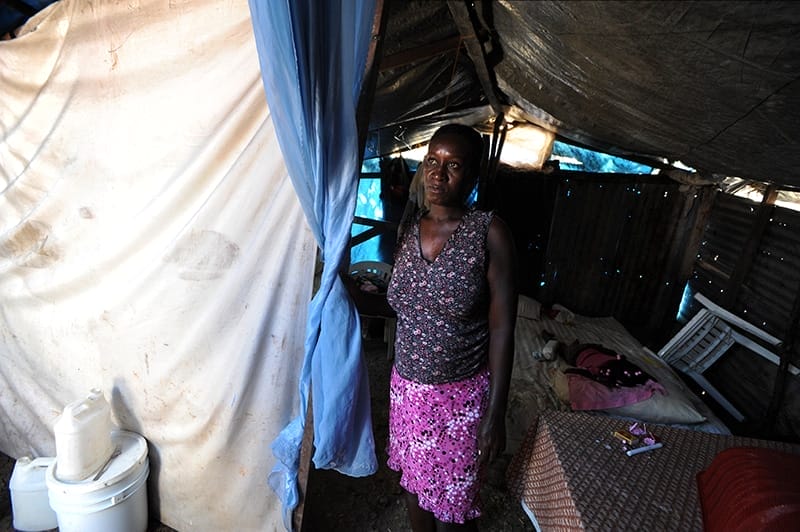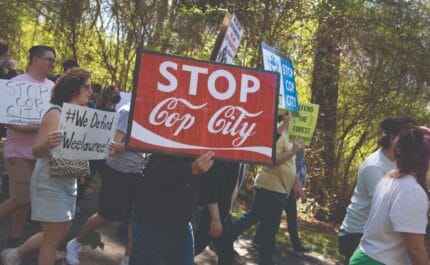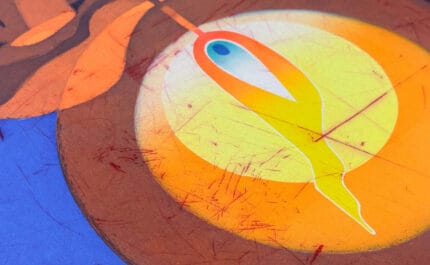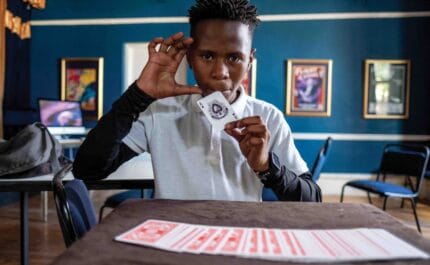Law in the time of cholera
Last week, the United Nations for the first time admitted it had played a role in the outbreak of a cholera epidemic which has ravaged Haiti since 2010. Back in early 2015, Susan Schulman traced the impact of the disease and met those who not only believed the UN was responsible for its arrival, but were taking legal action against the organisation

9th January 2015 (Taken from: #18)
The tent hospital is full. Limbs droop listlessly, hanging off the sides of beds made from planks of wood, each equipped with a large hole and a stained plastic basin below. The moans of a small boy twisting on his bed rise above the shuffle of footsteps as two men, small, thin and with furrowed brows, guide an infected woman to her bed. The child’s father leans over to comfort his boy as an emaciated dog skitters across the floor, dodging IV drips hanging from rusty stands as it goes.
These scenes from a Haiti cholera clinic – which are repeated across the country – are the result of what has been described by a report funded by the Pulitzer Centre on Crisis Reporting as “one of the most dramatically explosive epidemics in history”. In four years, cholera has infected 750,000 and killed 8,700. Yet as the disease continues to ravage the country, it has failed to attract international headlines or become a focus for international support. At the same time, cholera treatment centres run by international nonprofit groups, along with the government, are closing – from a peak of 120 to 40 as aid groups have pulled out. Even more troubling, the mortality rate within the centres that remain is rising. With barely 15 percent of the $2.2 billion the UN itself believes is needed to curb the spread raised, the future looks grim.
Before 2010, Haiti had had no reported outbreaks of cholera for over a century. The strain ravaging the country has been traced back to Nepal, almost 9,000 miles away and with whom Haiti has no direct links. So how did cholera come to Haiti? According to some, it came with those trying to help.

People wash their clothes in a river in Mirebalais. Plans for the development of critical water and sanitation facilities haven’t materialised, meaning people still rely on the same waterways that were responsible for the spread of cholera
Haiti was already at the bottom of the human development index in the Americas when the catastrophic earthquake of 12th January 2010 struck, killing 220,000 and injuring a further 300,000. With 70 percent of the buildings in the capital Port-au Prince destroyed, 1.5 million homeless, 25 percent of civil servants dead, and 4,000 schools and hospitals razed to the ground throughout the country, what little infrastructure Haiti had was decimated.
The international community mobilised quickly – an estimated $13.34 billion in aid was allocated by multilateral and bilateral agencies, the US military sent 17,000 troops to the area, who joined over 4,000 from other countries and 8,000 UN peacekeepers. Over 12,000 relief workers from almost 300 organisations also travelled to Haiti.
Ten months later, in October 2010, 60 kilometres from the capital, people started falling ill in droves and dying within hours. The population, already displaced and deeply traumatised by the earthquake, panicked as the mystery illness spread like wildfire. In a foretaste of West Africa’s Ebola outbreak, terror and suspicion were compounded as bodies, instead of being returned to families for funeral rituals, were bagged in black plastic and dumped unceremoniously into mass graves.
While NGOs raced into action trying to cope with the flood of patients, infectious disease specialist Dr Renaud Piarroux arrived from Marseilles to lead the quest to identify the disease and its source.
The epidemic had travelled down the country’s largest river, used by the population for all their water needs, including drinking, bathing, cooking and agriculture”
The outbreak was soon identified as cholera. “I never saw an epidemic spread as fast as the cholera in Haiti,” Piarroux said in an interview after publishing the paper ‘Understanding the cholera epidemic, Haiti’. As a waterborne disease spread through human waste and contracted by eating or drinking contaminated food or water, cholera thrives in the absence of drinkable water and sanitation systems. In the best of times, less than 23 percent of the Haitian population had access to sanitation and drinkable water but now 1.5 million were displaced, living crammed together in makeshift shelters in abysmal conditions. With no immunity in the population and no protocol for treating it, the disease dug in.
As Piarroux’s joint French-Haitian team mapped the epidemic’s movement, it became evident that it had travelled down the country’s largest river, the Artibonite, which was used by the population for all their water needs, including drinking, bathing, cooking and agriculture.
A United Nations base is situated on a tributary of the river high in Haiti’s Centre Department region. The base was home to Nepalese peacekeepers who had arrived to help on 8th October 2010, 12 days before the outbreak claimed the man thought to be its first victim, 38-year-old Jean Salgadeau Pelette.
Investigations soon revealed that raw sewage from the UN base was leaking through cracked pipes directly into the adjacent river, contaminating the network below. Genomic analysis of the bacteria further identified the strain of cholera as coming from Nepal, where cholera is endemic and where there had been a surge of cases just prior to the arrival of the Nepalese peacekeepers in Haiti.

Fanita Cadeau, 17, had severe cholera in 2012 and also lost an uncle to the disease. She is now back to doing her washing a stone’s throw from the UN base where the cholera epidemic originated
In the face of mounting evidence, the UN commissioned its own report. Published on 4th May 2011, it declared: “The 2010 Haiti cholera outbreak was caused by bacteria introduced into Haiti as a result of human activity; more specifically by the contamination of the Meye Tributary System of the Artibonite River with a pathogenic strain of the current South Asian type Vibrio cholerae… This contamination initiated an explosive cholera outbreak downstream in the Artibonite River Delta, and eventually throughout Haiti.”
While the UN’s own report seemed to reinforce the theory that the Nepalese peacekeepers, having arrived with the best of intentions, had inadvertently introduced cholera into Haiti and begun one of history’s worst outbreaks, the UN didn’t see it like that.
On the contrary, the UN claimed the report exonerated them. Pointing to a phrase in the report which attributed the outbreak to a ‘confluence’ of circumstances, the UN denied all responsibility.
The report was met with hostility in Haiti and beyond. “The failure to respond better to cholera is such a betrayal of everything I believed about the UN,” says Brian Concannon, Boston-based lawyer of the Institute for Justice & Democracy in Haiti (IJDH) and a former UN volunteer. “Their inability to respond justly really shook that faith.”
In November 2011, IJDH filed a claim directly with the UN on behalf of 5,000 victims of cholera, asking for compensation, a public acceptance of responsibility and investment in the water and sanitation infrastructure essential to eradication of the disease.
When, 15 months later in February 2013, the UN dismissed the claim, deeming it ‘not receivable’, Concannon, together with Haiti’s preeminent human rights lawyer Mario Joseph, started down a path with potentially enormous consequences. They would sue the UN in the hope of getting redress and compensation for victims from one of the most admired institutions in the world.
In October 2013, IJDH filed a lawsuit in New York against the UN, the UN mission in Haiti (MINUSTAH), Ban Ki-moon and former MINUSTAH head Edmond Mulet, suing for damages and compensation for Haiti’s victims of cholera. This was followed by two other lawsuits.
“The UN’s choice is simple,” the lawyers wrote in an earlier legal article outlining their position. “It can rise to the occasion and demonstrate that the rule of law protects the rights of poor Haitians against one of the world’s most powerful institutions, or it can shrink from the challenge and demonstrate that once again in Haiti, ‘might makes right’.”
The fate of the lawsuit fell into the hands of Judge J Paul Oetken, who was tasked with ruling whether it was legitimate and could proceed to trial.
Back in Port-au-Prince I pick my way gingerly through the streets trying carefully not to slide into the putrid waste that lines them. Beyond the sewage canals that run either side of the narrow path are closely-packed DIY homes, crudely patched together from corrugated iron and bits of fabric and plastic. The path crosses narrow streets hemmed in by filthy, rubbish-filled sewage canals, the wider ones bridged by precarious planks of wood. Luckily it is a dry, sunny day. When it rains, the canals overflow, flooding adjacent houses.
I arrive at the home that 29-year-old Lisna Sajous has shared with her husband and three young children since the 2010 earthquake destroyed their house. The gate is a five foot-high panel of corrugated iron decoratively studded with bottle tops. It swings open and like Alice through the looking glass, I step into a different world. I leave the filth behind and enter a perfectly clean, swept dirt yard, surrounding a makeshift corrugated home.

Lisna Sajous
Pulling aside the blue plastic sheet that serves as the front door, Lisna leads me inside. The family lives in just one room. There’s a bed, a couple of plastic chairs, a small table covered with a floral print cloth, and wire shelves stacked with pots, pans and plates. Light filters through the patchwork of different materials that form the roof. It is meticulously tidy.
Sajous’s six-year-old daughter Altima is sprawled on the bed, her head resting on a pillow the same colour as the bright pink baubles in her hair. She doesn’t stir. Lisna has only just brought her home from the MSF Delmas clinic where she spent six days being treated for severe cholera. An after-school stomach ache had become life threatening by night-time. “I completely freaked out,” Lisna recounts. “She was so weak, she couldn’t even stand. I was so afraid she would die.” She leans over to check on Altima and then, pausing to brush invisible dust off the floral sheets, leads me outside.
“I don’t let the children go outside the gate when I am here,” she explains, “but when I go out, sometimes I come back and I find them poking a stick into the canal and there is trash and sewage in there. I stop them and make them come inside, but they are kids and maybe they have touched the other end of the stick. Kids don’t care about washing their hands and maybe they haven’t washed them,” she says, despairingly.

Camp Acira in Port-au-Prince houses 32,400 people who were displaced by the 2010 earthquake. In November 2014 there were five new cases of cholera each day
The situation is no better in the countryside. Rivers, many strewn with rubbish, criss cross the country. Clothes are scrubbed, hair shampooed and small children frolic as they bathe in the very same waters which made them sick in the first place.
In the shadow of the UN Mirebalais base, it is the same. The Nepalese are long gone and the base is now occupied by Uruguayans, but the base watchtower – the letters ‘UN’ painted on it in the familiar blue and white – still presides over the river where the cholera bacteria is thought to have leeched into the river system, triggering the ongoing epidemic.
Women are washing clothes in the shallows of the river. A small boy lathers his hair a little bit further down before submerging in water darkened to a murky green.
“Yes, we heard cholera began here,” the women explain. “But what can we do? It is the one river in the area and we have to use it for laundry, bathing and teeth brushing, but we only drink it when the well is dry.”
There are two facets to dealing with a cholera epidemic. One is treatment. The other, without which the epidemic will never be vanquished and the disease will continue to ravage the population, is the development of sanitation and a drinkable water infrastructure.

Altima Miglina has just come back home after being treated for severe cholera for six days
“The reason that cholera in Haiti is so widespread, and spread so quickly, is because you have no water or sanitation,” says Dr Jean-Luc Poncelet of the Pan-American Health Organisation. “The real treatment of cholera is not a medical treatment. The real treatment is through the provision of clean water and proper sanitation.”
But four years since the disease took hold, there has been no significant progress on this front. Sanitation and drinkable water are as rare as ever. Port-au-Prince has never had a proper sewage network. Latrines, for the few who have them, are cleaned under cover of darkness by labourers known as bayakou, who descend – traditionally in the nude – into the latrine cesspools to scoop out the waste with a plastic bucket which is then raised by their partner above. Those without latrines defecate wherever they can, often directly into plastic bags which are tossed anywhere and everywhere.
There was a glimmer of hope in 2012. Haiti’s agency in charge of water and sanitation, DINEPA, which had only been established in 2009, succeeded in opening the country’s first two waste treatment plants with help from the Spanish Agency for International Development Cooperation (AECID).
But the good news didn’t last. Today, only one of the sites is functioning. The other remains shut, its gates closed and weeds growing through the pavement, the closure variously attributed to an ongoing dispute with the owners of the land and cracked pipework.
With only one site to cover the entire country of 27,750 square kilometres, 83 percent of the population remains without any access to sanitation at all, fighting an all-too-often losing battle to keep their families well.
As Dr Rishi Rattan of the Boston-based Physicians for Haiti puts it: “Haiti is the only country in the entire world where the sanitation coverage has fallen over the last decade.”

Lack of water and sanitation in Port-au-Prince condemns the population to potential infection as filthy canals criss-cross the area and overflow into homes when it rains
In November 2012, the government of Haiti declared that “cholera, despite its virulence and lethality, is under control and can be eliminated” and launched a $2.2 billion, ten-year fundraising plan to eradicate the disease from Hispaniola, the island Haiti shares with the Dominican Republic.
Supported by the UN, and bolstered by commitments from the World Bank and Inter-Latin American Bank, the plan included “four areas of action: water and sanitation, epidemiological surveillance, health promotion for behaviour change, and care of infected persons in health institutions.”
But it is now 2015 and barely 15 percent of the total sum has been raised. The problem remains far from being corrected and, in some ways, is getting worse.
Lack of funding has closed two thirds of treatment centres. Medicine is in short supply. Hospitals don’t always have money, even for soap – a disaster as hand-washing is essential to prevent transmission. But most serious of all, medical staff employed by the government are not being paid.
Nurse Marie Viergilie Paul, 41, began working in the cholera treatment facility at Hospital St Nicolas of St Marc on 8th March 2013, employed by the Haitian government.
8,000 dead is not enough to justify a budget for providing water and sanitation. I don’t know what is needed to convince people”
When I speak to her in December 2014, she has received pay for only three of the 19 months she has worked. She was told that Gonaïves (the authority responsible for her salary) hasn’t received any cash for cholera and as such cannot pay her.
Nurse Paul continues to work every shift, clinging to the belief she will eventually be paid. “I don’t lose my motivation,” she explains, sitting under a line of freshly washed blue scrubs hung out to dry above the door of her small, modest cinder block home in Saint-Marc.
When cholera arrived, Dr Jean William Pape of the Haitian medical NGO Gheskio quickly geared up to treat it. Already well known and internationally acclaimed for his work in successfully bringing HIV under control in Haiti in the 1980s, Dr Pape quickly opened Haiti’s first 24-hour cholera clinic, which soon boasted the country’s lowest death rate.
He also introduced new practices, producing chlorinated water for 100,000 people, using smartphones to facilitate tracing and to enable rapid response to cases, and vaccinating widely, which had a significant impact in curtailing cases and fatalities in ‘Kosovo’, the neighbourhood surrounding his clinic, so named for its levels of violence and crime.
But things have changed. “The funding has completely disappeared,” he says, “If you only do it halfway, it will be very dangerous… In 2011, Haiti had 60 percent of all the cholera in the world but the fatality rate was lower as we had staff. Without funding and no staff, the death rate will go up.” It already has.

The cholera treatment centre at Mirebalais
UN assistant secretary-general Pedro Medrano Rojas was appointed senior coordinator for the Cholera Response in Haiti in December 2013. He is frustrated. “In just the last two months the fatality rate was higher than the last eight,” he says. Without the necessary investment now, the fatality rate is expected to continue to rise, further deepening the devastation caused to Haitian victims and their families. But fighting cases of the disease, critical as it is, will not end the epidemic.
“The fundamental problem is that if you don’t touch at the capacity of the country to generate potable water, to distribute it to the people, and to have proper sanitation, you will continue to have, if it’s not cholera, something else…. The risk of Ebola in this country is extremely high for the same reason,” Dr Poncelet cautions. “So, you know, 8,000 dead is not enough to justify a budget for providing water and sanitation. I don’t know what is needed to convince people.”
The UN is keen to emphasise that it does care. “I think that… we understand that this is certainly a tragedy and we’re doing our best to solve the problem,” stresses Mr Medrano. However, without funds, nothing can be achieved.
It’s an icy day in New York in December 2014, a few weeks before Judge Oetken’s ruling is due. I have come to a moving, if sparsely attended multifaith service for the Haitian victims of cholera held at the UN’s NY Tilman chapel. “We are here today… to ask the UN in a peaceful, prayerful and yet firm way to assume responsibility and make reparation for their negligence,” implores Haitian Georgette Delinois, in a gentle beginning that soon gives way to reprimand.
“It is indeed morally irresponsible for the UN to continue to ignore the cholera and the ills it has brought to Haiti, a country with a people that has already had so many strikes against them. You would all agree with me that the UN’s ‘I don’t care’ attitude is an inhuman, disrespectful, unjust and morally wrong response and should not be accepted [or] tolerated by anyone.”
The iconic UN building stands behind us as IJDH lawyer Brian Concannon and I step out into the cold. “I’m a lawyer because I believe in laws and I believe in justice,” he tells me, “and to have the organisation that takes such a leadership role in Haiti and in the world promoting justice so cynically refuse to accept justice is just outrageous to me and is deeply disturbing.” He is not alone. Some of the fiercest critics have come from within the UN itself.
“The diplomatic difficulties surrounding this issue must be overcome in order to assure the Haitian people that the epidemic will be halted as soon as possible and that full reparation for damages will be provided,” the UN-appointed expert on human rights in Haiti, Gustavo Gallón, exhorted in his stinging February 2014 mission report.
Gallón cited the basic principles on the right to a remedy and reparation for victims of violations of international human rights and humanitarian law, and openly criticised the UN. “The United Nations should be the first to honour these principles,” he said, and quoted his predecessor’s claim that “silence is the worst response.”
Others believe that the UN publicly accepting responsibility – and opening itself up to a multi-million pound lawsuit – would have a far greater impact. Speaking at the Oetken hearing, assistant US attorney Ellen Blain told the judge that allowing the suit to move forward “would create and open up a huge set of claims … [from] private parties around the world.” Blain’s implication was that if the UN could not do its work with legal immunity, it might stop doing its work altogether – no more peacekeeping, no more aid operations, no more UN.
On 9th January 2015, Judge Oetken dismissed the IJDH lawsuit, deeming the UN immune from legal action. Concannon has already filed an appeal and the two other lawsuits remain pending. I recall our conversation at the service. “The UN’s position is that no one can make them take responsibility,” he said. “They don’t fight that the facts say they’re responsible. They say, ‘Nobody can make us take responsibility’.”
While the battle for responsibility is being waged in US courts, thousands of miles away Haitian children continue to wash in the river overlooked by the UN base.
Postscript: On 17th August 2016, the New York Times reported that the UN had for the first time admitted that it had played a role in the outbreak. A confidential report sent to Secretary General Ban Ki-moon by special rapporteur Philip Alston had stated that the epidemic “would not have broken out but for the actions of the United Nations.” Ban Ki-moon acknowledged a “significant new set of UN actions” was required to deal with the epidemic.
Slow Journalism in your inbox, plus infographics, offers and more: sign up for the free DG newsletter. Sign me up
Thanks for signing up.








